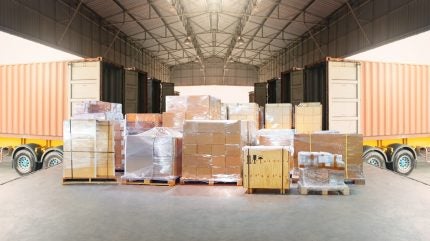
Transporting goods safely and cost-effectively across supply chains has become a cornerstone of modern commerce.
Transit packaging, often referred to as transport packaging, plays a crucial role in protecting products from damage, contamination, and theft as they move from manufacturers to warehouses, distributors, retailers, or end consumers.

Discover B2B Marketing That Performs
Combine business intelligence and editorial excellence to reach engaged professionals across 36 leading media platforms.
As global trade expands and e-commerce reshapes shopping habits, the importance of durable, sustainable, and cost-effective transit packaging solutions has never been greater.
The role of transit packaging in supply chains
Transit packaging is designed to safeguard goods during handling, storage, and distribution.
Unlike primary packaging, which holds the product directly, or secondary packaging, which groups multiple items together, transit packaging focuses on withstanding the rigours of transportation.
It must endure shocks, vibration, compression, moisture, and temperature changes while keeping the contents intact.

US Tariffs are shifting - will you react or anticipate?
Don’t let policy changes catch you off guard. Stay proactive with real-time data and expert analysis.
By GlobalDataCommon types include corrugated cardboard boxes, wooden pallets, shrink wrap, stretch film, plastic crates, and protective cushioning materials like foam or paper.
Choosing the right combination depends on the nature of the goods, the transport method, distance, and storage conditions. For example, fragile electronics may require custom-moulded inserts, while bulk commodities might need heavy-duty pallets with reinforced straps.
Recent trends in transit packaging highlight the rising demand for eco-friendly options. Companies are under pressure to reduce waste, cut carbon footprints, and meet consumer expectations for sustainable practices.
Lightweight yet strong materials, such as recycled-content corrugated board or biodegradable films, are increasingly replacing traditional plastics.
This shift aligns with corporate social responsibility goals and regulatory frameworks targeting packaging waste reduction.
Key considerations for effective transit packaging design
Designing transit packaging involves balancing protection, cost, sustainability, and logistical efficiency. One of the first considerations is product characteristics, including weight, fragility, and shape.
Oversized or irregularly shaped products might need tailored packaging, whereas standardised goods can benefit from modular, stackable containers that maximise pallet space and reduce transport costs.
Another essential factor is mode of transport. Sea freight exposes goods to high humidity and potential condensation, while air cargo requires lightweight solutions to minimise shipping fees.
Road transport can cause frequent jolts or vibrations, so shock absorption becomes a priority. By anticipating these challenges, packaging designers can create solutions that match specific transit conditions.
Labelling is also critical for effective transit packaging. Clear, durable labels help logistics staff identify contents, handle items properly, and comply with safety regulations for hazardous materials. Incorporating scannable barcodes or RFID tags enhances supply chain visibility, enabling real-time tracking of shipments and reducing the risk of loss or theft.
Moreover, optimising packaging dimensions contributes to supply chain efficiency. Right-sizing boxes to fit products snugly avoids excess void fill, lowers material use, and reduces transportation costs by fitting more units per shipment.
This practice also supports sustainability goals by minimising waste.
Future trends and innovations in transit packaging
Advancements in materials science, automation, and digital technology are reshaping transit packaging.
Smart packaging features, such as condition-monitoring sensors, are gaining traction, especially for temperature-sensitive goods like pharmaceuticals or perishable foods.
These sensors record environmental data during transit, alerting stakeholders if thresholds are breached so they can take corrective action before products spoil.
Reusable transit packaging systems are another emerging trend. Instead of single-use cardboard boxes or stretch wrap, companies are investing in durable, returnable plastic crates and pallets.
While the upfront cost is higher, the long-term savings, waste reduction, and environmental benefits are significant.
This model aligns with circular economy principles, where resources remain in use for as long as possible.
3D printing is beginning to influence transit packaging too. Custom inserts and protective components can be quickly produced to fit unique products, reducing lead times and inventory requirements.
This flexibility is particularly valuable for businesses offering customised or low-volume items.
Finally, digital twins of packaging systems—virtual models that replicate the physical performance of packaging—are being explored by manufacturers to simulate stress, vibration, and impact scenarios.
By predicting how packaging will behave under real-world conditions, companies can refine designs before committing to production, improving reliability and reducing development costs.
Looking ahead
Transit packaging is far more than a simple box or pallet; it is a strategic element of modern logistics that protects products, reduces costs, and supports sustainability efforts.
With the growth of e-commerce, globalised supply chains, and consumer demand for greener solutions, businesses that invest in effective, innovative transit packaging strategies will be better positioned to succeed.
As new materials and smart technologies advance, transit packaging will continue evolving, offering greater efficiency, reduced waste, and enhanced protection—ensuring goods arrive safely, every time.





